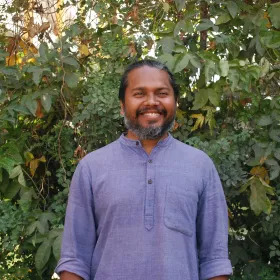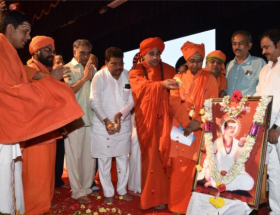Asim Siddiqui
Recently an incident in Tumakuru created a stir on social media where a farmer was humiliated by a car salesman by judging his appearance. The farmer, Kempegowda, wanted to buy a pickup truck but the salesmen apparently ridiculed him by saying that you don’t look like you are having even 10 rupees in your pocket and have come to buy a car worth 10 lakh rupees. As it turned out, Kempegowda did have the means and was able to come back with 10 lakh rupees within half an hour and demanded an immediate delivery which left the salesman and the showroom red-faced. At the face value, it seems to be a rural/urban problem or a class issue where the urban dwellers look down upon their rural counterparts and treat them at a sub-par level. The same salesman would have behaved very differently if someone in a suit had walked in and spoken in English. In that case, the customer would have treated the salesman at a sub-par level and ordered him around, which probably the salesman would have not much of an issue abiding by.

This incident is but one of the countless such incidents that happen on a daily basis in India where people treat others differently by judging their appearance, the way they speak, ‘polished’ behaviour, and other such status markers. It almost feels like we have an internal radar that is unconsciously working in the background and making evaluations of every person we meet based on their appearance, the way they speak, their occupation, their family background, etc. and then decide how that person needs to be treated – with respect or with contempt. And this is not just in India but also with Indians who are living in other parts of the world, who are constantly trying to evaluate how the other person deserves to be treated by them even when outside appearance ceases to be different. In contrast, in other cultures even when there are substantial class differences and inequalities there still is a basic dignity given regardless of the person’s occupation or appearance. This makes one wonder what is the root cause of such mentality in our culture, which creates this internal radar and makes us treat some people with undue respect, and some with unfounded contempt.
Caste as a concept
When I claim that this incident reveals a caste mentality which is the root cause of creating this internal radar, people will object by saying that the salesman and the farmer didn’t know each other’s caste so how can this be treated as a caste-based judgment. In fact, it may turn out to be the complete opposite – the farmer is possibly from a dominant rural caste group whereas the salesman is probably coming from a working class “lower-caste” background. This brings us to the main point I want to highlight in this article, which is that caste is not only an empirical reality i.e. people belong to different caste groups; but more than that it is a mentality that shapes the way we perceive the world in a graded hierarchy and makes us treat people differentially.
Ambedkar understood the fundamental fissure in our society as emerging from this culture of caste mentality which doesn’t allow all humans to come together in one fraternity. Instead it puts them in groups of graded hierarchy where the respect and status you get from others depend on where the two people are placed in this hierarchy. Every person can be treated with contempt by someone who is above them in the hierarchy, and they will then do the same to those below them. In this constant struggle to not be treated with contempt but with basic dignity, people try to hide all markers that get associated with contempt. Whether it is clothes, food, cleanliness and smell, way of speaking (especially English), occupation, family background, the music, novels & films you like, and possibly everything else that can be deemed as “impure” or “uncultured” need to be removed so that you are treated with basic dignity. In contrast those markers that are symbols of dominant caste culture are flashed around unnecessarily like “upper-caste” surnames, sacred thread, elite lineage, ‘pure’ food, ownership of land, etc so that everyone knows your position in the graded hierarchy, and no one dares to misbehave. This constant self-disciplining of one’s behaviour due to this caste mentality creates a permanent anxiety among everyone to be not seen as someone who can be disrespected. A simple everyday situation where we can see this playing out is in a shop or restaurant where a customer gets mistaken for someone who works there. The customer almost feels the immediate urge to correct and say – “Can’t you see from my appearance that I don’t work here!” From a Brahminical perspective, any kind of labouring is seen as demeaning and arranged in a complex hierarchy from the most demeaning to the least.
In an older settlement like a rural context, where one possibly knows others in the village, also know how everyone needs to be treated based on their caste location in this graded hierarchy. However, in a comparatively new context, like that of a car showroom, one doesn’t know where the other person is situated in this hierarchy and that’s where the internal radar kicks in which evaluates the other person’s place from their appearance, the way they speak, etc. In this case, the car salesman used his internal radar to make the judgment that the farmer can be treated with contempt because of his appearance. Of course, as a self-respecting farmer, Kempegowda didn’t accept this contemptuous behaviour towards him from a salesman and used his social networks to arrange for the money required to buy the car to win back his dignity. However, one may wonder what would have happened to a poor farmer who wouldn’t have been able to arrange the money. Does he not deserve to be treated with equal dignity which is their constitutionally guaranteed right? Hasn’t the salesman himself not experienced such contemptuous behaviour from some other customers or his supervisor so why would he do the same to anyone else? To understand this everyday phenomenon of differential treatment, one needs to see this as an outcome of the caste mentality. Only then can we attempt to address this deep-rooted cultural behaviour of ours.
Towards an anti-caste mentality
Observing the amount of stir and outrage this viral video created, it can be inferred that it troubled the moral compass of a large number of us. News channels played the video on a loop and questioned the behaviour of the salesman. On social media, people are asking why a farmer should be treated so badly just because of his appearance even as we celebrate our 73rd Republic Day. Constitutional morality of course highlights the importance of equal dignity not just in the preamble but all through the fundamental rights whether in the rights to equality (Articles 14-18), rights to freedom and non-exploitation (Articles 19-24), or rights to practice & profess your religion (Articles 25-30). However, in everyday reality we are unconsciously working with the internal radar to place people in the graded hierarchy and treat them differently. To get rid of this internal radar we can’t merely wish it away and say we don’t see caste anymore and treat everyone the same. The salesman in all probability didn’t know the caste of the farmer but still treated him with contempt which arose from an unconscious caste mentality. Thus, to bring equal dignity for all human beings in practice, we need to consciously develop an anti-caste mentality; mere caste-blind mentality won’t help.
The question then that will arise here is –what is an anti-caste mentality, and how will it remove this internal radar of placing people in a graded hierarchy? The first step towards developing an anti-caste mentality is to realise how deeply our cultural psyche is shaped by the logic of caste i.e. this uncontrollable urge to put people, labour, intelligence, food, clothes, language, and possibly every dimension of human experience in a graded hierarchy which requires differential treatment. Once we are aware of this cultural psyche that shapes all our social relations, the next step is to consciously remove the contempt associated with the so-called “lower caste” markers and at the same time remove the undue respect associated with the so-called “upper caste” markers to treat them at par. This implies that our automatic response towards judging others based on their appearance and other qualities need to be thoroughly examined and changed. Third step in building an anti-caste mentality is to engage with the wide range of anti-caste thinkers and anti-caste social movements that have a rich tradition of more than two thousand years in the Indian subcontinent. Engaging with their experiences, reflections and theories is the best way to understand our own cultural history and the important attempts made to create an egalitarian society. Finally, in our own everyday lives we need to connect the problems that the caste mentality has created for those who are imposed with a lower-caste status by excluding them from education, land ownership, good housing, dignified livelihoods, healthcare, drinking water and clean sanitation, and most of all equal dignity and respect. Only by bringing change in the material and social conditions of unduly disadvantaged groups can we finally achieve an equal and fraternal society – the goal of anti-caste mentality.
~
Asim Siddiqui is a member of the faculty of philosophy and development at Azim Premji University, who works on issues of social and cultural justice by drawing upon philosophical traditions from India and outside. In his doctoral research, he conceptualized an Ambedkarite critical pedagogy for a transformative education.










